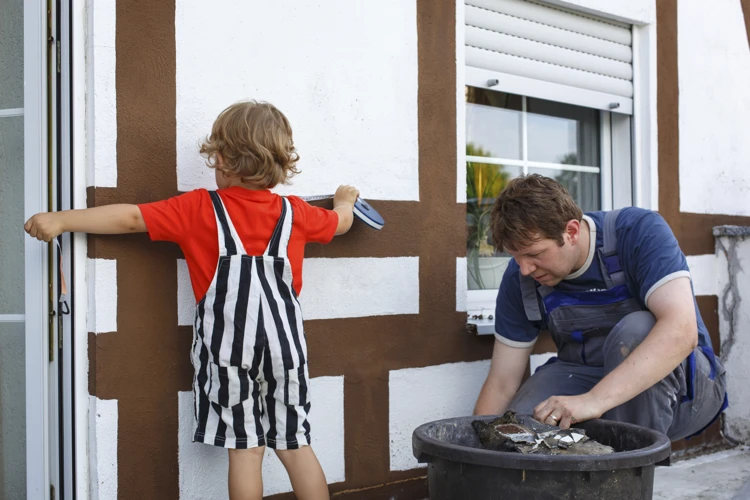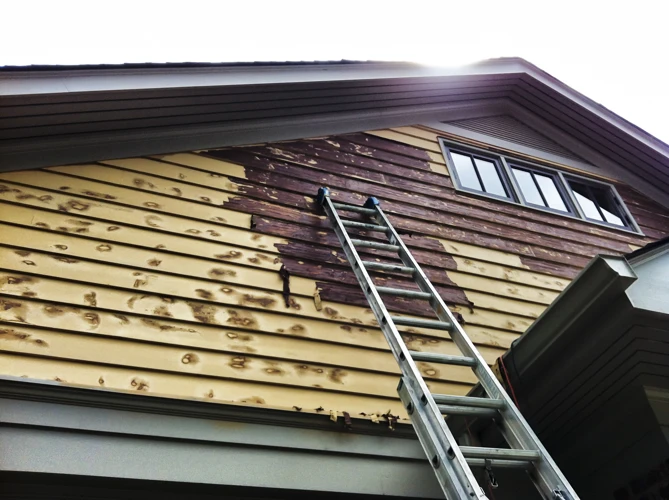Confronting the elements is an inevitable part of any exterior home maintenance project, particularly when it involves painting in wind. Windy conditions can introduce a slew of complications that demand careful consideration and planning. Acknowledging these challenges is the first step toward ensuring a successful and durable outcome.
Possible Problems You May Face While Painting House Exterior in Wind
As you prepare for painting house exterior in wind, it’s critical to anticipate potential hurdles. Gusts can cause debris to stick to wet paint, uneven drying, and even remove fresh paint from surfaces. These factors can compromise the finish and longevity of your paint job. Moreover, wind can pose safety risks, making ladder use precarious and overspray a concern for neighboring properties.
Exterior Paint Wind Advice: Preparing for Windy Condition Painting
Heeding exterior paint wind advice begins with checking the weather forecast to select the optimal day. Light breezes may be manageable, but strong winds could necessitate postponement. Secure any loose items, cover plants and nearby structures, and ensure scaffolding and ladders are stable. Patience and flexibility in scheduling can make a significant difference in the painting process and results.
Outdoor Painting Guide: Best Practices for Windy Weather
Embarking on an outdoor painting guide for best practices painting outdoors in windy weather is essential for achieving a high-quality finish. It requires a strategy that encompasses technique adjustments, tool selection, and meticulous preparation to counteract the unpredictable nature of wind.
Wind Resistant Painting Techniques: Securing Your Environment
- Use drop cloths and heavy-duty tape to shield areas from wind-blown debris.
- Anchor lightweight items that could become airborne and damage wet paint.
- Opt for a brush or roller over a sprayer to minimize the risk of overspray.
Exterior Painting Tips: Paint Application in Windy Conditions
When it comes to paint application windy conditions, thinner coats are advisable. They dry quicker, reducing the window of vulnerability to wind-borne particles. Moreover, working on the wind-sheltered side of the structure can provide more control over the application and finish of the paint.
Choosing the Right Tools for Painting in Wind
The selection of tools can greatly impact the effectiveness of painting in wind. Brushes and rollers with synthetic bristles or covers designed for outdoor use are less likely to lose fibers due to wind abrasion. Additionally, extension poles allow for a safer reach without over-reliance on ladders that may be unsteady in gusty conditions.
Executing Your Windy Weather Painting Project
With a well-thought-out approach, executing your windy weather painting project can be both efficient and rewarding. It’s about combining preparation, technique, and the right timing to work harmoniously with the wind rather than against it.
Step-by-Step Guide to Painting in Wind
- Monitor weather predictions and choose the mildest conditions possible.
- Secure the perimeter by fastening tarps and removing potential flying debris.
- Apply paint in thin, even layers, starting from the least exposed areas.
- Allow ample drying time before applying subsequent coats.
Applying Windy Condition Painting Strategies
Applying windy condition painting strategies involves patience and precision. Tackle one section at a time, keeping a keen eye on the wind’s direction and strength. Adjust your technique as needed, perhaps reducing the size of the area you’re working on to ensure quicker drying and better handling.
Finishing Touches and Post-Painting Advice
As you near the completion of your project, the focus shifts to preserving the quality of your work. The finishing touches are crucial in sealing the effort you’ve invested, particularly when painting in challenging conditions.
Ensuring Quality in Windy Weather Painting
Ensuring quality in windy weather painting hinges on a thorough inspection once the paint has dried. Look for areas that may have been affected by debris or uneven drying and touch them up if necessary. It’s also advisable to apply a weather-resistant sealant to provide an extra layer of protection against the elements.
Windy Condition Painting Cleanup and Evaluation
Cleanup after painting is just as important as the preparation. Safely dismantle any protective barriers, ensuring that all materials are disposed of or stored appropriately. Evaluate the final product from various angles and distances to ensure consistency and coverage, making note of any lessons learned for future windy weather painting endeavors.
Additional Considerations for Painting Outdoors in Wind
While the aforementioned tips provide a solid foundation, there are always additional considerations when taking on an exterior painting project under blustery conditions.
When to Consult a Professional for Painting House Exterior in Wind
If the challenges of painting in wind seem daunting or if the conditions are exceptionally harsh, consulting a professional may be the best course of action. Professionals come equipped with the expertise, equipment, and techniques to handle the unpredictability of the wind, ensuring a safe and high-quality finish.
When embarking on an exterior painting project, it’s essential to consider the elements. While our guide on how to paint exterior surfaces provides a comprehensive overview, painting in windy conditions requires special attention. For optimal results, you might want to learn about the best time to paint your home’s exterior and how different weather conditions can affect the outcome. Moreover, selecting the right paint color is crucial, and our article on maximizing natural light for paint color choices can help you make an informed decision that complements your home and its surroundings, regardless of the wind.
Long-Term Maintenance of Wind-Affected Exterior Paint Jobs
Finally, long-term maintenance is key to upholding the integrity of your paint job. Regularly inspect the exterior for signs of wear or damage, particularly after heavy winds, and perform touch-ups as needed. Proper maintenance will extend the life of your paint and keep your home looking its best, regardless of the weather.
By following these guidelines, you can navigate the challenges of windy weather painting and achieve a beautiful and lasting exterior paint job. Remember, patience and preparation are your allies in combating the elements and ensuring the success of your outdoor painting project.

